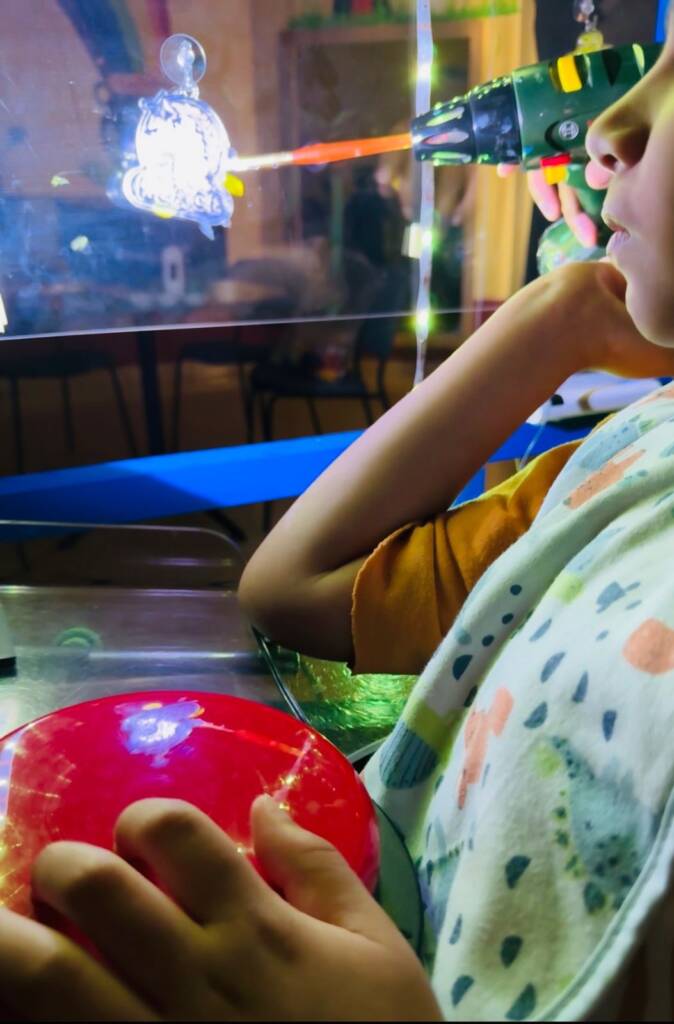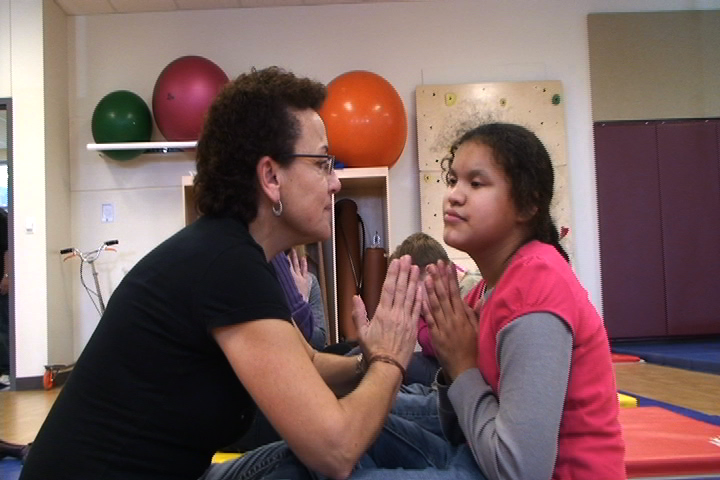 Yoga is rich in teaching opportunities, and can be used to support learning in a wide variety of skill areas– improving movement patterns and spatial concepts, social interactions, emotional regulation, and language and literacy skills. It is a perfect activity for collaboration between professionals—occupational and physical therapists, orientation and mobility specialists, teachers of the visually impaired, and speech language pathologists may all find opportunities to embed skills from their specialization areas into the yoga routine. The diagram below shows specific communication and language skills that can be addressed through yoga:
Yoga is rich in teaching opportunities, and can be used to support learning in a wide variety of skill areas– improving movement patterns and spatial concepts, social interactions, emotional regulation, and language and literacy skills. It is a perfect activity for collaboration between professionals—occupational and physical therapists, orientation and mobility specialists, teachers of the visually impaired, and speech language pathologists may all find opportunities to embed skills from their specialization areas into the yoga routine. The diagram below shows specific communication and language skills that can be addressed through yoga:
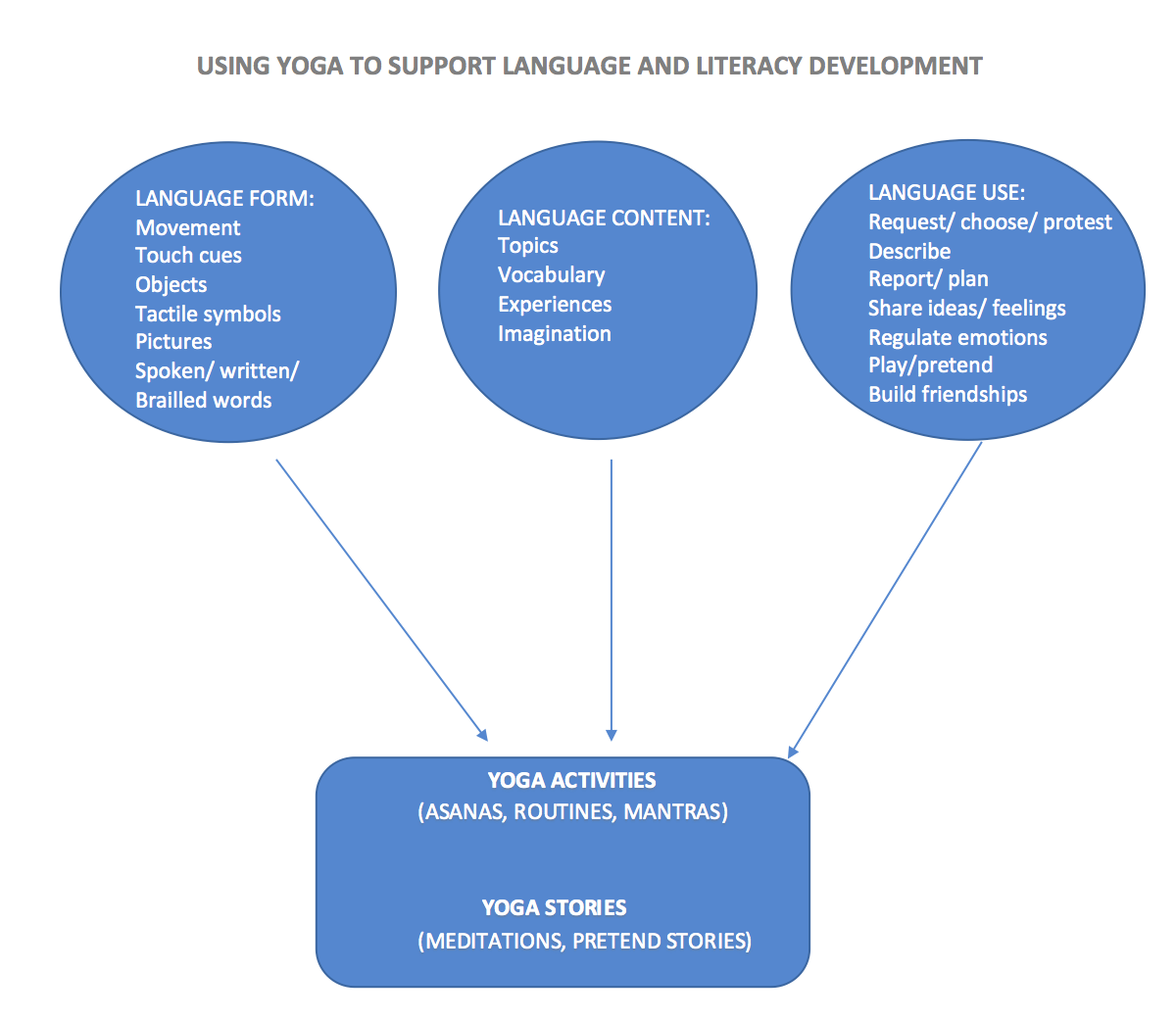
Language Form
- Movement
- Touch cues
- Objects
- Tactile symbols
- Pictures
- Spoken/ written/ brailled words
Language Content
- Topics
- Vocabulary
- Experiences
- Imagination
Language Use
- Request/ choose/ protest
- Describe
- Report/ plan
- Share ideas/ feelings
- Regulate emotions
- Play/pretend
- Build friendships
All of the above lead to Yoga Activities (asanas, routines, mantras) and Yoga Stories (meditations and pretend stories).
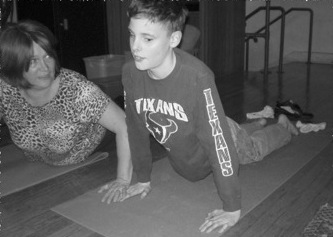
Yoga Programs Offer a Collaborative Model
As we have worked with others to develop yoga programs for students with visual impairment, we have found that this is truly a collaborative model–it is important to build a strong movement foundation through input from movement specialists such as Occupational and Physical Therapists, and Orientation and Mobility Specialists. Teachers and Speech language pathologists often provide valuable input in developing yoga stories, helping to set up tactile or visual supports/ schedules, and teaching new vocabulary. We all work together to support the process oriented skills needed for any student who is approaching literacy learning. Most of all, the yoga activities provide one context in our busy days in which we can all connect, share an experience and center ourselves for the challenging work we do every day.
This is the first of three posts on yoga. We will provide two perspectives on yoga lessons taught to our students with visual impairment–first from a Certified Orientation and Mobility Specialist, Kassandra Maloney, and then from a Speech-Language Pathologist, Linda Hagood. Kassy will focus more on the activities themselves, while Linda’s post will focus on using yoga to support narrative language. We share a focus on the self-regulation, needed for both ourselves and our students.
Connecting Yoga with Academic Learning
Yoga provides an excellent context for teaching important process-oriented skills necessary for any student who is approaching literacy learning:
Connecting with others—The writer and the reader must connect in order for reading or writing to have shared meaning. Yoga is a good place to practice this connection and build perspective-taking, and yoga stories are one way to tie it more closely to the reading and writing instruction in the classroom.
Creativity and symbolic thinking—Especially when reading or writing fiction, students must be able to use their imaginations to assume other identities, imagine what might be instead of being tied to the concrete world of the here-and-now.
Emotional regulation—Recent research on social emotional learning and mindfulness supports the need for students to learn to maintain cognitive and emotional focus as a foundation for all other learning. Typically developing children often learn this through play, and yoga and pretend stories might be a play-based way for older children to approach self regulation as well. Stories, mantras, and meditations that involve the feelings of other characters, controlling one’s own body to move fast and slow and one’s voice to be quiet and loud, will help the child with a visual impairment to practice emotional regulation outside the demands of the everyday social world.
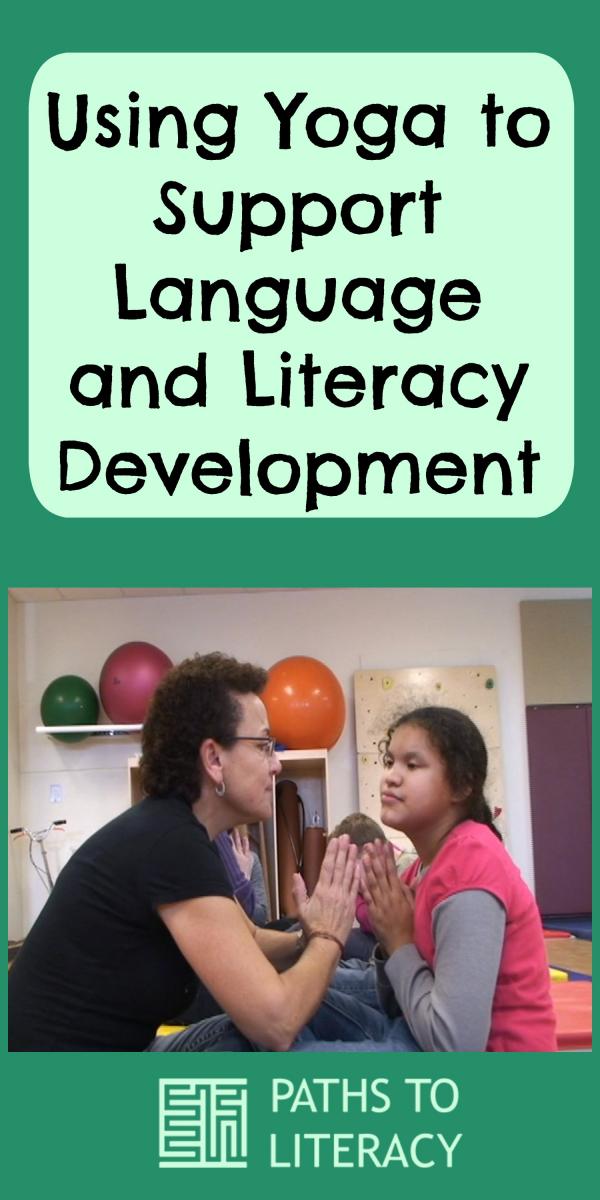
See Better Together: Building Relationships with People Who Have Visual Impairment & Autism Spectrum Disorder (or Atypical Social Development) for more ideas by Linda Hagood.



